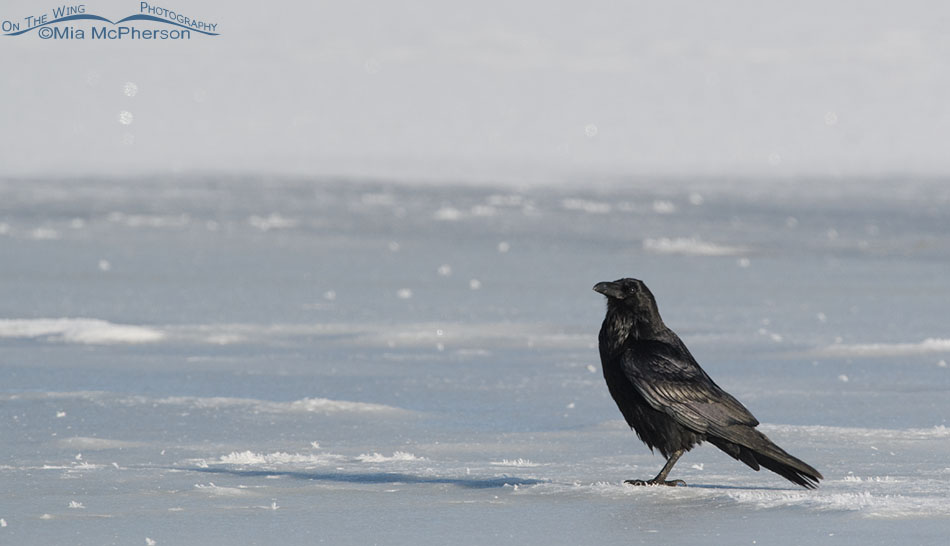 Common Raven on ice – Nikon D500, f7.1, 1/3200, ISO 500, Nikkor 500mm VR with 1.4x TC, natural light
Common Raven on ice – Nikon D500, f7.1, 1/3200, ISO 500, Nikkor 500mm VR with 1.4x TC, natural light
Last week when I visited Bear River Migratory Bird Refuge I photographed several birds on the frozen marsh including a Common Raven on ice. The raven wasn’t close though so I only took a few images of it because it was so far away.
I liked the stark contrast of the raven’s dark, glossy feathers against the whites and grays of the ice in my photos. Getting detail to show in those black feathers can be a challenge for bird photographers.
The Common Raven may have been waiting on the ice hoping to snatch some tidbits of food from the gulls and herons that were foraging for fish in an area of open water.
Common Ravens along with other members of the corvid family are intelligent birds. They can remember individual human faces, hold grudges, and are said mourn the loss of one of their own. Ravens use tools, can mimic human speech, and parallel great apes in physical and social cognitive skills. Licensed rehabbers who have had Common Ravens in captivity due to injuries that made them unreleasable often extol the intelligence of these birds.
Usually when I see Common Ravens I see them in pairs. Sometimes they are perched side by side “talking” to each other. How I wish I could understand what they are saying to each other. When I spot a single raven I’ve learned to scan the nearby area for its mate.
The intelligence of Common Ravens plus their habit of being close to each other fascinates me when I see them out in the field.
I could wish that the Common Raven I photographed last week had been closer. I’m simply delighted that it was there on the ice so that I could photograph it. I truly don’t mind the raven being small in the frame.
Life is good.
Mia
To view more of my Common Raven photos plus facts and information about this species click here.
Articles on the intelligence of ravens:
Ravens can be better at planning ahead than four-year-old children, study finds – Independent UK
Ravens Are Smarter Than Human Children – Inverse.com





You have caught the highlights nicely, especially with the high contrast of the overall image.
Marty, as a special education teacher we used delayed gratification, object permanence and cause and effect tests to help us asses children in our self-contained severe unit. I often use these same test on animals to see if they can understand. It is very educational for me. I can say some species are better over all at the tests but also that it is almost an individual response per animal as in humans.
Ravens, crows and magpies to me are fascinating in their vocalizations and interactions with each other. They are the bird I would love to house and care for at my mew, one of the imprinted ambassadors used for education.
The recent NOVA about bird intelligence definitely demonstrated corvid brain power, including ravens’ abilities to understand delayed gratification and object permanence. I can see the wheels turning in this bird.
This is such a lovely image — and a high degree of difficulty one, with the stark contrast between black and white. Nicely done!